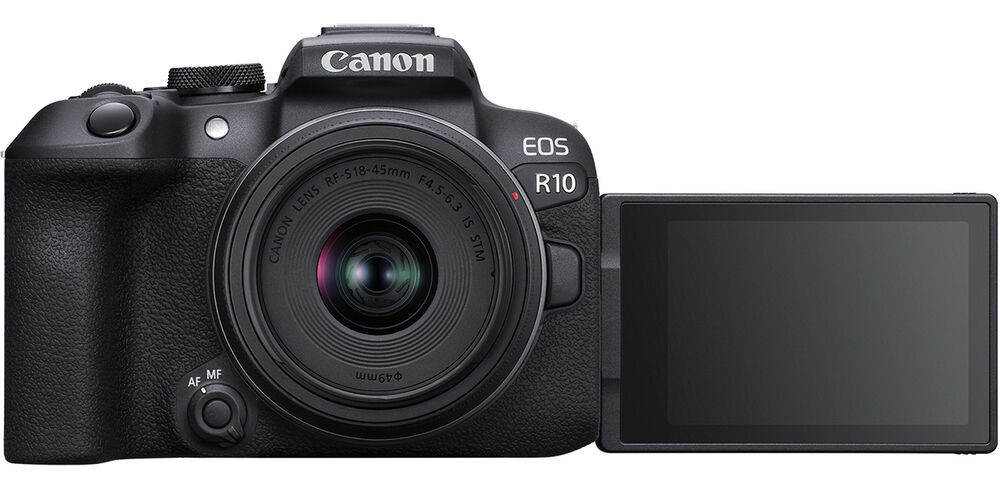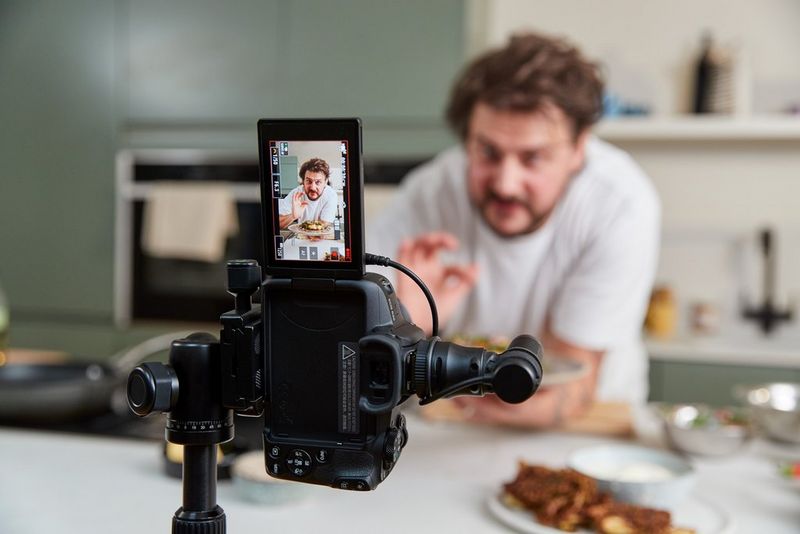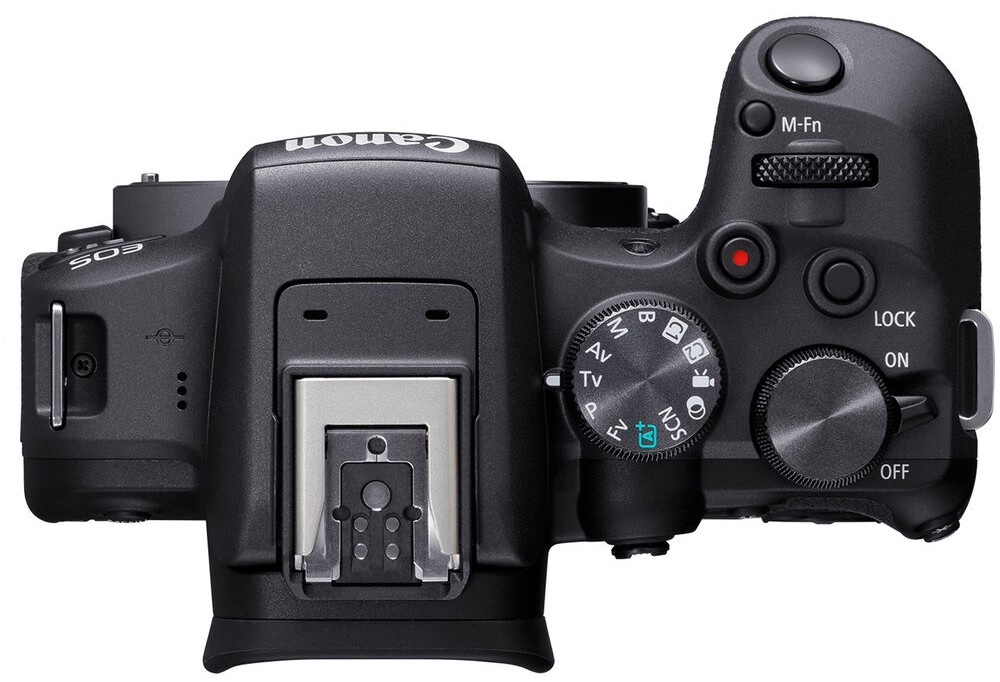What a Novice Camera User Should Look for in a Canon Mirrorless Camera
As the editor of a Canon-centered photography blog, I've had an intimate view of how challenging it is for new photographers to buy their very first mirrorless camera. The Canon EOS R series is an expansive lineup of everything from low-priced APS-C cameras all the way to full-frame bodies, and each one of these cameras is designed for different levels of experience. New shooters are caught in the middle of finding a good balance between user-friendly, functional, and expandable, without making the process too complex.
This guide gives an overall look at the major factors new photographers should think about when buying a Canon mirrorless camera. I cover all the necessary factors, including user-friendly, sensor size, autofocus, lens mounting, video features, portability, expense, and even a comparison of the models recommended. Ultimately, I am attempting to equip new photographers with the tools to make thoughtful decisions to pursue their creative goals and functional needs.
Ease of Use and Intuitive Interface
The camera interface is essential to the learning process for a beginner photographer. It can make photography easier or more difficult. I have seen many people hesitate to learn how to use their camera because of an overwhelming menu or poorly placed manual controls. A better user experience will increase your confidence to learn and explore more.
Canon is generally regarded to provide the most intuitive interfaces in photography, especially for beginner or entry-level cameras like the EOS R100, EOS R50, and EOS R10. Through the canon interface, Canon embeds guided modes that help you utilize technical terms like ISO, f-stop or aperture, and shutter speed into more relatable concepts.
For example, the EOS R50 and EOS R10 has a fully movable touch screen that allows you to access all of the menus at the tip of your fingers (tapping the control screen or zooming in like you would on your smartphone), which significantly enhances usability.

The R10 offers the same with customizable buttons that provide immediate access to the favourite settings. The R100, for lacking a fully articulating screen, compensates for this in its classy Creative Auto mode, simplifying exposure controls and incorporating a range of creative filters. Beginners will want to seek out cameras with responsive touchscreens, simple menu systems, and intuitive features so that they can focus on taking pictures rather than struggling through complex technical menus.
Sensor Size and Image Quality
The sensor, indeed, is the heart of every camera, determining its ability to detect light, detail, and color. Canon's mirrorless cameras, which predominantly employ APS-C sensors, are predominantly utilized by amateurs, whereas professionals, like those using the EOS R8, favor full-frame sensors. Amateur photographers need to be aware of the distinctions between these types of sensors in order to make a good choice.

APS-C sensors, which measure approximately 22.3 by 14.9 mm, are not just smaller but also cheaper than full-frame sensors. Available on cameras such as the EOS R100, R50, and R10, these 24.2-megapixel sensors produce sharp, colorful photos, perfect for a variety of applications, from the family portrait to holiday. The 1.6x APS-C sensor crop factor has the effect of more or less multiplying the focal length of lenses and is thus well adapted to telephoto work, i.e., wildlife or sports photography. The crop does reduce the angle of view available for wide-angle work, i.e., landscape or architecture work. APS-C sensors perform well in light, but they generate more noise in low light than their full-frame counterparts.
Full-frame sensors, like the remarkable 24.2-megapixel sensor in the EOS R8, are 36 x 24 mm in size and are built to allow more light in, resulting in incredible low-light performance and a wider dynamic range. This functionality allows for the creation of sharper images in low-light conditions, such as indoor events or nighttime photo shoots. Full-frame sensors also have a shallower depth of field, which provides a lovely blur in the background that gives portraits and art shots punch. They also provide a wider field of view and are perfect for capturing those wide landscape shots or group shots. Full-frame cameras and lenses are heavier and more expensive, however, which may be a disadvantage to a beginner who is worried about portability and cost.
For the majority of hobbyist photographers, APS-C sensors strike the sweet spot, producing high-resolution files that are printable to 20x30 inches without the expense or complexity of full-frame systems. The R10 and R50, driven by Canon's DIGIC X processor, advance image quality through improved noise reduction and color rendition. Full-frame bodies such as the R8 are most suitable for those with larger budgets or particular requirements, like low-light photography. APS-C bodies, however, offer sufficient performance for novice users, along with the promise of an upgrade down the road.
Autofocus Capabilities
Autofocus functionality is key, especially for beginners, who will struggle with manual focus in fast-moving or complicated situations. The Canon Dual Pixel CMOS AF II in the EOS R10, the EOS R50, and the EOS R8 is a standout feature that provides fast and accurate focusing over a wide area.
The tracking features allow focus to follow fast-moving subjects, whether people, animals or cars, and makes it easy to lock focus. They're great cameras for candid photography as you will be able to chronicle your child's first steps or your pets playtime. The autofocusing capabilities that includes eye detection will track the subject's eyes automatically, making portrait shooting effortless and guaranteeing sharp shots.

The EOS R100, using the older 143-point Dual Pixel CMOS AF, is still adequate for static subjects but may not be able to keep up with fast-moving subjects. The R8, using 1053 points and advanced subject detection, delivers high-end performance but is not typically needed by beginners. Beginner shooters need to seek out cameras that feature eye-detection and subject tracking in order to deliver professional-level photographs with less effort on a consistent basis.
Lens Compatibility and Ecosystem
The lens ecosystem for any camera represents a significant investment in the long term, as many lenses will last longer than camera bodies, and they are also a major determinant of image quality. Canon's RF Mount has been used across all of the R-series cameras, and the good news is it is a developing lens ecosystem. Canon has put significant emphasis on the RF lenses, often with an eye on full-frame formats, which can be on the expensive side. However, if you are a beginner, you can use RF-S lenses across APS-C models such as the R100, R50, and R10, which are much cheaper options to start out with. The RF-S 18-45mm f/4.5-6.3 IS STM that is often supplied as a kit lens is an excellent versatile lens to use if you need a compact wide-angle to short telephoto option. The EOS R8 is an interesting product because the ability to use RF lenses exists, and it is undoubtedly a full-frame sensor camera, thus as a beginner, you will have to purchase more expensive, full-frame lenses to take advantage of all of their features, which might force you to make some very difficult choices with your budget.
The EF-EOS R adapter enables the use of older EF and EF-S lenses, many of which can be sources for cheaper options in the secondhand market. The EF-EOS R adapter is most useful because it allows novices to experiment with many different lenses without the financial commitment of an expensive RF optic. The limited choices of RF-S lenses, particularly in contrast to the entire range of full-frame RF lenses, could limit APS-C lenses creativity. Novices should remain aware of all of these lens options.
Video Features for Aspiring Creators
In today’s world of social media and vlogging, many new photographers are turning to videography as well. Canon designed their mirrorless cameras for some video capability with the intention to attract casual and potential content creators. Canon has offerings in the EOS R50 and R10 cameral that provide 4K recording at 30 fps and full HD at 60 fps and come with vari-angle touch screens that allow you to frame and shoot when vlogging or shooting selfies. The R50 has a “Product Showcase” mode that works really well to emphasize or smoothly transition to showing things held up to the camera which is useful for content creators and vloggers (or product reviewers). With the EOS R100, while it has 4K recording, it applies a crop and narrows the field of view too much for wide-angle video. The R8 can give you uncropped 4K and other cool video features such as 10-bit recording if they want to create cool colour grades, but it comes with a price which may not appeal to somebody new to video.

Also consider some video-specific features, such as external microphone inputs and having decent auto-focus when you are recording video. The R50 and R10 have the ability to use an external microphone to have better quality audio, compared to built-in audio which can impact the potential quality of professional story telling. New people interesting in video need to consider cameras that offer uncropped 4K, vari-angle screens and decent auto-focus to allow some flexibility for shooting stills or video.
Portability and Ergonomics
One of the major benefits of mirrorless cameras is their smaller size compared to classic DSLRs, which a new person is likely to prefer as they appreciate being able to travel with their camera gear. The EOS R100 is only 356 grams, considerably lighter than any other mirrorless body from Canon, which would be ideal to travel with or take to casual shoots. The R50 is slightly heavier than the R100 at 375 grams but is still portable, and with the added benefit of having a vari-angle screen. The R10 is 429 grams, meaning there is slightly more weight in hand but it has a little bit of a deeper grip for better handling if you have larger hands. The R8 is also compact at 461 grams, however when using larger full-frame lenses, this could become very heavy and no longer as portable.

Comfort in ergonomics is also a consideration as a comfortable camera is one you will use more frequently and therefore likely to improve and grow over time. The R10 has a good grip and button layout which means it is easier to hold for extended usage over a period of time, while some users may not feel as comfortable with the smaller grip of the R100 which may feel less secure. The R50 is a happy medium, if you are someone who appreciates travelling light but would need a modest grip. It is best practice for a novice photographer to try the camera out in-store when ever possible so they can see how the body feels naturally in their hand. Getting this right is so important. If the ergonomics of the camera body do not fit right for you, you may experience fatigue or not use the camera at all.
Budget and Value for Money
Budgetary constraints plague many first-time photographers, so Canon has a variety of inexpensive mirrorless options to cover varying interests. The EOS R100 runs about $529 with a kit lens, and without comparison where it performs best is with still-oriented users. The R50 comes in at approximately $679, and brings a touch-screen, uncropped 4K, and auto-focus improvements, making it much more favorable for users interested in not only photography, but also videography and short-form content creation. The R10, running around $979, offers a faster burst speed and better ergonomics, offering a respectable option for users with an interest in action-based photography. At the high end, the R8 runs roughly $1,499 and brings full-frame performance and all the quality in expected of Canon cameras, but might not practical approach for budget-minded beginners.
To make the most of their money, you would recommend beginners spending money beyond their costs round up like a tripod, additional battery, or other lenses - don't overspend on a fancy body! If the shopper is lucky, they can check for deals at local authorized retailers, B&H Photo, Adorama, or Canon's own website to expedite the beginner budget. As a note, avoiding advanced bodies like EOS R6 Mark II would preserve expense for more relevant gear than excessive upgrades not allowing for practice.
Pros and Cons of Recommended Cameras
EOS R100
Pros: Most affordable, lightweight, simple interface, reliable for stills.
Cons: Fixed LCD screen, cropped 4K video, older autofocus system, limited burst speed (6.5 fps).
EOS R50
Pros: Vari-angle touchscreen, uncropped 4K, advanced autofocus, compact design.
Cons: Slightly more expensive than R100, limited RF-S lens selection, moderate battery life.
EOS R10
Pros: Fast burst shooting (15 fps), robust autofocus, vari-angle touchscreen, ergonomic grip.
Cons: Higher price point, no in-body image stabilization, limited native RF-S lenses.
EOS R8
Pros: Full-frame sensor, uncropped 4K, exceptional low-light performance, advanced autofocus.
Cons: Expensive, heavier, complex for beginners, requires costly full-frame lenses.
Specification Comparison Chart
|
Specification
|
EOS R100
|
EOS R50
|
EOS R10
|
EOS R8
|
|
Sensor Type
|
APS-C (24.2 MP)
|
APS-C (24.2 MP)
|
APS-C (24.2 MP)
|
Full-frame (24.2 MP)
|
|
Processor
|
DIGIC 8
|
DIGIC X
|
DIGIC X
|
DIGIC X
|
|
Autofocus Points
|
143
|
651
|
651
|
1053
|
|
Burst Shooting
|
6.5 fps
|
12 fps
|
15 fps
|
40 fps
|
|
Video Resolution
|
4K (cropped)
|
4K (uncropped)
|
4K (uncropped)
|
4K (uncropped)
|
|
Screen Type
|
Fixed LCD
|
Vari-angle Touch
|
Vari-angle Touch
|
Vari-angle Touch
|
|
Weight (Body)
|
356 g
|
375 g
|
429 g
|
461 g
|
|
Price (w/ Kit Lens)
|
~$529
|
~$679
|
~$979
|
~$1,499
|
|
Battery Life (Shots)
|
~430
|
~370
|
~450
|
~370
|
|
Lens Mount
|
RF/RF-S
|
RF/RF-S
|
RF/RF-S
|
RF
|
Additional Considerations for Novices
In addition to the important points made so far, novice photographers will want to consider a few other things to make sure their camera selection is a good fit for their lifestyle and photo goals. First, battery life is important, as the more you shoot with a camera or video record with any camera, the more quickly it will run down. The R10 has the best battery life at around 450 shots per burst, followed by the R50 and R8 at 370 shots. The R100 has 430 shots and is strong at this price point. If you're going to be out for a long time, I would recommend carrying an extra battery.
Next, there are many good camera features like Wi-Fi and Bluetooth. These are available on all of these models; therefore, you can easily send your images to your smartphone, tablet or your computer in order to edit and share your work. The Canon Camera Connect app will help you with your post-production sharing of images to social media and help keep your files backed up. Novice photographers should check to see that their camera supports Wi-Fi and other features for added convenience.
Finally, resource materials are easy to come by for newbies. You can find tutorials and guidelines on Canon's website for every model. Or you could read our blog, which provides full reviews about every model and all kinds of tips and creative exercises. Also, join an online group; look for Canon's official forums or photography groups on X, etc. You’ll get the advice and inspiration you need. As long they pick the correct camera for their needs, and as long they take advantage of the resources available, novices can develop a firm foundation for their photographic journey.
And don’t forget to keep coming here to get more information, tips and news.
803